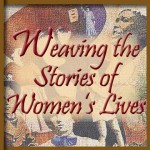Beginning as simply a “Women’s History Week” the week of March 7th, 1982, a celebration of women and their accomplishments and contributions developed over 5 years into an annually declared “Women’s History Month” that we honor today. It is a time of the year where women are acknowledged for their political, social, economical, and cultural impacts that may be overlooked in other months. The story of America is one involving every gender, race, and social class. From Sacagawea to Joan of Arc to Susan B Anthony to Florence Nightingale to Harriet Tubman to Annie Oakley to Marie Curie to Georgia O’Keefe to Mother Theresa to Gloria Steinem to Vera Wang to Oprah Winfrey, women from every nook and cranny of the world have been leaders, innovators, challengers to social norms, and more.
This month is not just for the suffragists, the angry feminists who set their undergarments ablaze, the first female politicians to take a particular office, or the pioneering women figures who resisted the patriarch by choosing career paths in typically male-centric fields. This month is just as much for those women whose part in history was to care for men in battle, to raise their children to be upstanding human beings, and to explore the depths of culture through art, music, theatre, and literature. All of these things have had and will continue to have radical impacts on our society today.
Then there are early modern authors like Jane Austen whose work combined romantic novels with social realism; Harriet Beecher Stowe, the author of Uncle Tom’s Cabin, that openly supported the anti-slavery campaign; Emily Dickinson whose poetry influences modern poetics to this day; Mary Shelley, the author of Frankenstein, who invented the literary genre of science fiction at the young age of 21 years old; Anne Frank whose use of a diary enlightened the world to the reality of hiding from the Gestapo; and Maya Angelou who was one of the first African American women to publicly discuss her personal life in her own published writing.
In today’s culture, readers can become immersed in popular culture reading such as the Harry Potter series by JK Rowling, Suzanne Collins’s The Hunger Games trilogy, S.E. Hinton’s The Outsiders, Lois Lowry’s The Giver, and Sarah Dessen’s numerous YA love stories. Or they can choose to read books to help bring about social change such as Jodi Picoult’s novels that question our judicial system and bring LGBT issues into the spotlight; Kathryn Stockett’s The Help that exposed the trials African American women had to overcome during the Civil Rights Movement period; and Roxane Gay’s Bad Feminist that contains a series of essays on how she is an imperfect supporter of equality between the genders and how that’s okay.
In recent literary anthologies, 1 female writer is included for every 6 male writers. Reading women writers’ work is useful for everyone, not just to support them, but to understand how women characters in their books and poems actually tell the real story of what it means to be a woman. These characters can directly interact with the reality of womanhood, are simply smart and capable women like Katniss Everdeen, Hermione Granger, and Jo March, or reveal that women are flawed human beings through characters like Amazing Amy in Gone Girl who proves that likable women choose not to always do the right thing. Women writers, past and present, are able to provide readers with dynamic, three-dimensional, and true female characters that can influence how women are depicted in any form of writing by any gender. Of course, female authors are not limited to challenging the gender definitions, but can make other significant contributions too like pushing the limits of narrative as Virginia Woolf does with her nonlinear approach. More and more women have become storytellers, poets and prophets, the authors of dreams and ideas–the voices to whom we listen. Female authors are important simply because women’s voices are integral to the human experience.
This month we commemorate and revere the works of all women writer’s across the span of time. Women have been granted the right to an education, gained the right to vote, entered into the world of sports, served as heads of state, made important scientific discoveries, taken to the skies, outnumbered men in college, and changed the world through their literary voice. All women from each of these categories and others are threads that make up an intricate pattern of history for the world. Be sure to check out the display to find out for yourself.
Links:
BANC (Library Catlogue) to search for books by or about women writers: http://libraryguides.berea.edu/
For more information about Women’s History Month:




